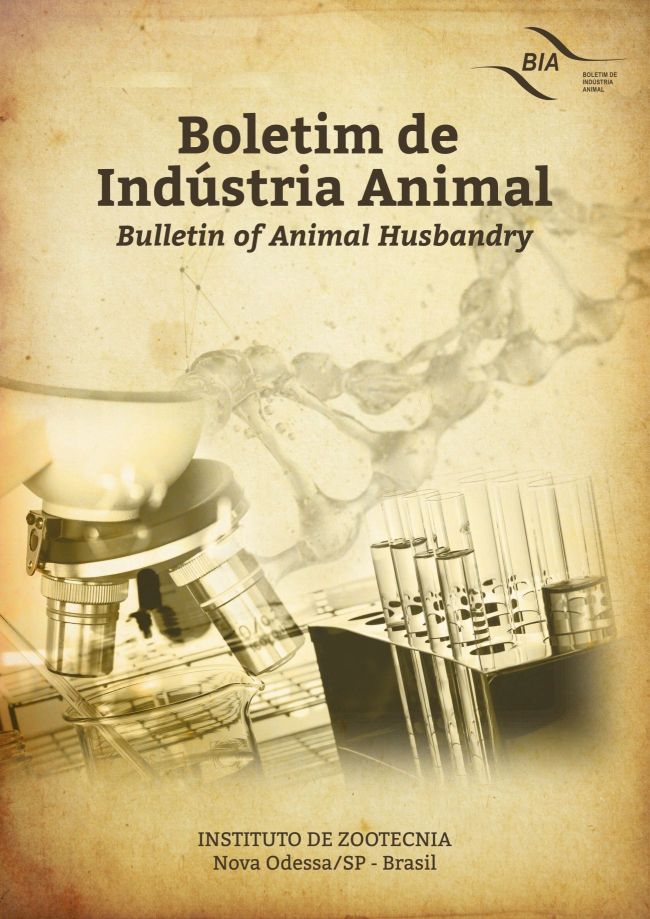Physical-chemical characterization of silkings of bagaço of red and white grape
DOI:
https://doi.org/10.17523/bia.2019.v76.e1443Keywords:
diet, lignin, protein, byproductsAbstract
The use of grape marc, a co-product of the viticulture industry, presents itself as an alternative to reduce costs with ruminant feed, also helping the environment, besides giving a destination to this material that is discarded by the industry, still helps reduction of methane production by ruminants. The objective of this work was to present physico-chemical results of grape marc silage, with different varieties of red and white grapes. The silage was distributed in two treatments (white and red grapes) with three grape varieties, containing three replicates, totaling 18 silos. The silage process was carried out in pvc microsilows, in a completely randomized subdivision. The bromatological composition of the white and red grape silages was evaluated separately. In the varieties of white grapes studied, the Chardonnay grape presented higher levels of DM (23.23%), OM (92.10%), CP (12.60%), ADF (43.47%) and EE (7,2 %) in relation to the Gewurztramine and Sauvignon Blanc varieties. There were no differences (P <0.05) in the CP, but the pH values €‹€‹were higher (4.10) in the Cabernet Sauvignon variety. The Merlot and Tannat grapes had similar contents (P <0.05) for DM, OM, MM and pH. The white grape marc silages and paints of this study present low DM values €‹€‹resulting in nutritional losses, with medium BP levels when compared to other studies. Although pH values are adequate for good fermentation of the ensiled material, the lignin and fat contents are very high, making this ensiled material with low nutritional value for use in ruminant feed, where further studies should be performed with this co-product.
Downloads
Downloads
Published
Issue
Section
License
Os autores não serão remunerados pela publicação de trabalhos, pois devem abrir mão de seus direitos autorais em favor deste periódico. Por outro lado, os autores ficam autorizados a publicar seus artigos, simultaneamente, em repositórios da instituição de sua origem, desde que citada a fonte da publicação original seja Boletim de Indústria Animal. A revista se reserva o direito de efetuar, nos originais, alterações de ordem normativa, ortográfica e gramatical, com vistas a manter o padrão culto da língua e a credibilidade do veículo. Respeitará, no entanto, o estilo de escrever dos autores. Alterações, correções ou sugestões de ordem conceitual serão encaminhadas aos autores, quando necessário. Nesses casos, os artigos, depois de adequados, deverão ser submetidos a nova apreciação. As opiniões emitidas pelos autores dos artigos são de sua exclusiva responsabilidade. Todo o conteúdo deste periódico, exceto onde está identificado, está licenciado sob a Licença Creative Commons Attribution (CC-BY-NC). A condição BY implica que os licenciados podem copiar, distribuir, exibir e executar a obra e fazer trabalhos derivados com base em que só se dão o autor ou licenciante os créditos na forma especificada por estes. A cláusula NC significa que os licenciados podem copiar, distribuir, exibir e executar a obra e fazer trabalhos derivados com base apenas para fins não comerciais.













